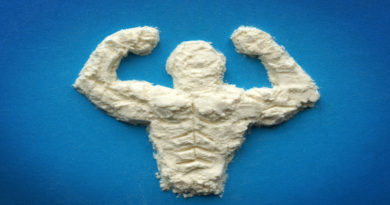Metabolic resistance training
It is possible to lose fat and build muscle at the same time. But get ready to suffer for the sake of your metabolic resistance.
According to some experts in bodybuilding, metabolic resistance training is ideal for who want to achieve both results in a short period of time.
The training consists of intense effort to increase the size of the muscles and burn calories, stimulating the metabolism and maximizing the response of the body to this limitless effort. This adaptability of the body can be increased by 50% in just six weeks.
The metabolic resistance training, or MRT, as it is known among its adepts, incorporates various combinations of exercises, like intense cardiovascular work or strength work, and has proved to be one of the most effective ways to lose weight by eliminating body fat.
Smoothing the effects of lactic acid
One of the factors to be taken into account when you do strength workout is the production of lactic acid, that occurs when the athlete is pushed to its limit, or beyond. Muscles produce it to extract energy when other sources are exhausted, but its excessive production results in fatigue and muscle aches, which prevents the muscles to properly contract, reducing the number of repetition you can do, for example.
However, metabolic resistance training can reduce this problem by increasing the flow of lactic acid out of muscle tissue, by increasing the training capacity that will enable greater muscle development.
This kind of training is also a great way to increase the EPOC effect, which occurs after the training session and allows us to maintain a high metabolic rate many hours after the exercise, that may last 36 hours.
How to train MRT
The premises of metabolic resistance training are based on a practice without boundaries, that will stimulate your metabolism to perform greater number of exercises in a shorter time, which forces the body to give its maximum; the involvement of the largest possible number of main muscles in every training session (polyarticular exercises); and the implementation of fast movements when you perform repetitions, especially for those parts of the exercise when the muscle shortens or “folds” (concentric effort).
One of the most popular forms of metabolic resistance training is the circuit training.
Are you ready?







